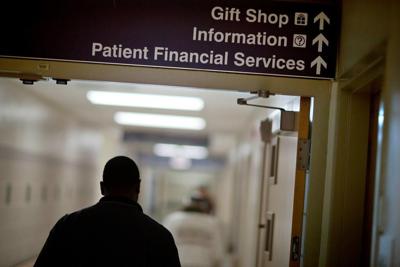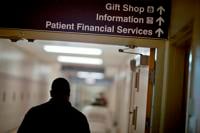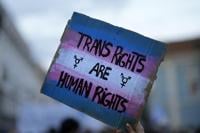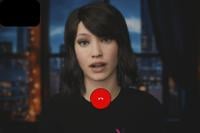Medicaid coverage will end for millions of Americans in the coming months, and it will push many into unfamiliar territory: the health insurance marketplace.
States from the government-funded plans when they no longer qualify based on income, a process that has been paused since shortly after the COVID-19 pandemic hit.
The timing of these cuts will vary. But all states have insurance markets where people who lose Medicaid can buy new coverage with help from subsidies. Some states will even connect shoppers with a potential new plan.
Shopping for affordable insurance that covers regular doctors and prescriptions can be daunting, especially in marketplaces that offer dozens of choices and subsidies to help pay for them. Experts say it helps to start this search with a plan. Here’s a deeper look at the process.
WHAT’S HAPPENING TO MEDICAID?
Nearly 85 million people are covered by government-funded Medicaid, which focuses on people with low incomes.
At the start of the pandemic, the federal government prohibited states from kicking people off Medicaid if they were no longer eligible. That ban ends this spring, and many people on Medicaid will be introduced to this so-called redetermination process for the first time.
States are already verifying eligibility. Some, like Arizona, Arkansas and Idaho are expected to start ending coverage for ineligible people in April. Most states will be doing that in May, June and July.
Federal officials estimate that more than 8 million people will lose eligibility and leave Medicaid mainly because their incomes have changed.
WHERE TO GET NEW COVERAGE
State-based health insurance marketplaces created by the Affordable Care Act are the only places where people can buy individual insurance with help from an income-based subsidy. They can be found through the federal government’s website.
Shoppers also can find coverage sold outside these marketplaces, but it may be risky. For instance, short-term plans can exclude coverage of certain things like a medical condition someone had before signing up.
INCOME-BASED SUBSIDIES
The cost of any new plan should be one of the first things people consider. Shoppers can get income-based subsidies to help pay monthly premiums of plans they buy on the state-based marketplaces. Those subsidies were enhanced during the pandemic.
People often don’t realize they can get this help, said Jeremy Smith, director of West Virginia’s health insurance navigator program, which helps shoppers find coverage.
“A very large percentage of people can qualify for a plan starting at $0 per month,” he said.
COVERAGE DIFFERENCES
Individual insurance differs from Medicaid in several ways. Some marketplace plans come with a big deductible that people must pay before most coverage starts.
Shoppers should understand deductibles and other payments they will need to make before committing to a plan, Smith noted.
Individual insurance also groups hospitals and doctors in networks. The insurance may cover much less of the bill for care received outside those networks. Shoppers should learn how any regular doctors and medications are covered before enrolling in a new plan.
Individual insurance also can give people more care choices. Many doctors don’t accept Medicaid, and states may pay for only a limited amount of prescriptions.
“It is possible that people will have better access to certain services in the marketplace,” said Jennifer Tolbert, a Medicaid expert at the non-profit Kaiser Family Foundation.
IMPORTANT STEPS IF YOU'RE ON MEDICAID
Make sure your state program has your current contact information, including a mailing address plus email and cellphone. They will send notifications if they need more information or if someone no longer qualifies for Medicaid.
“Everyone should do that before April,” said said Joshua Brooker, an independent broker based in Lancaster, Pennsylvania. “It’s going to make a smoother transition.”
Start shopping for new insurance before Medicaid ends. Shoppers should allow plenty of time to sort through options.
The goal should be to have new insurance that starts the day after Medicaid ends. That would cut down on temporary coverage losses for regular doctors or important medicines.
Once shoppers register to shop in the insurance marketplace, they have 60 days to find a plan.
GETTING HELP
Seeking assistance may be a good idea, especially for people who need help figuring out their income for the coming year. That's needed to calculate subsidies.
There are several ways people can get help.
States will transfer the names and contact information of those who no longer qualify for Medicaid to their marketplaces. They also will send a letter to Medicaid beneficiaries telling them how to connect to the marketplace, said Kate McEvoy, executive director of the nonprofit ���ϳԹ��� Association of Medicaid Directors.
Some states will go further. California’s marketplace, Covered California, will enroll people in a qualified health plan and send them the information. Those people then must confirm enrollment and pay the first premium to remain covered.
State marketplaces have navigators like Smith who can help people sort through options and understand potential plans. The government-funded navigators are free to use but they cannot recommend any specific choices.
Federally qualified health centers also have counselors who can help people apply.
Independent brokers also help people sort through options. They will get a fee that usually comes out of the premium you wind up paying.
___
The Associated Press Health and Science Department receives support from the Howard Hughes Medical Institute’s Science and Educational Media Group. The AP is solely responsible for all content.








































